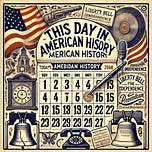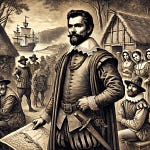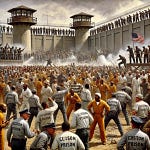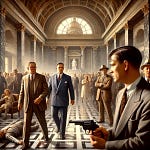Today, we explore the powerful story behind the creation of a song that would one day become the national anthem of the United States—The Star-Spangled Banner. On September 14, 1814, during a critical moment in the War of 1812, lawyer and poet Francis Scott Key witnessed the British bombardment of Fort McHenry in Baltimore, Maryland, a pivotal event that inspired the words to the anthem that Americans hold dear today.
Let’s go back to the early morning of September 13, 1814. The United States was locked in a fierce war with Great Britain. The British, having recently burned Washington, D.C., turned their attention to Baltimore, a major American port city. Their strategy was simple: capture Fort McHenry, which guarded the entrance to Baltimore’s harbor, and strike a decisive blow against the United States.
At the same time, Francis Scott Key found himself aboard a British ship, not as a prisoner, but as part of a diplomatic mission. Key had secured permission to negotiate the release of Dr. William Beanes, a friend who had been captured by the British. Key and his fellow negotiator, Colonel John Skinner, successfully argued for Beanes' release. However, they were held aboard the British ship overnight as the British prepared to launch their attack on Fort McHenry.
Key, Skinner, and Beanes were essentially stuck in the middle of a major battle. From their vantage point on a ship in the Chesapeake Bay, they witnessed the intense bombardment of Fort McHenry, a barrage that lasted 25 grueling hours. The British fired bombs, rockets, and mortar shells at the fort, hoping to destroy its defenses and force the American surrender.
Throughout the night, the only sign of hope for Key was the fort's storm flag— a smaller American flag that continued to fly amidst the attack. The "rockets' red glare" and "bombs bursting in air" illuminated the night sky, and Key watched anxiously, uncertain whether the fort would hold. As dawn broke on September 14, Key saw a sight that moved him deeply: the larger American garrison flag, known as the Star-Spangled Banner, flying proudly over the fort, signaling that the Americans had withstood the British assault.
Overwhelmed with emotion and patriotism, Key began composing a poem on the back of a letter he had in his pocket. The verses reflected the awe he felt seeing the flag still waving after such a fierce battle. He wrote: "O say can you see, by the dawn's early light, what so proudly we hailed at the twilight's last gleaming?" Key’s words captured the perseverance and resilience of the American spirit, symbolized by the flag that survived the bombardment.
The poem, originally titled "Defence of Fort M'Henry," was soon set to the tune of a popular British song, To Anacreon in Heaven, composed by John Stafford Smith. This pairing of Key’s patriotic lyrics with a well-known melody quickly gained popularity. Although the song had a range of 19 semitones and was notoriously difficult to sing, it became a beloved patriotic anthem for generations.
But it wasn't until March 3, 1931, that The Star-Spangled Banner was officially designated as the national anthem of the United States, nearly 117 years after Key penned the poem. President Herbert Hoover signed the bill into law after a lengthy campaign by veterans' groups and other advocates who sought to formalize the song's place in American culture.
While The Star-Spangled Banner is most often remembered for its first stanza, which is performed at public events across the country, the song has four verses in total. Each stanza builds on the theme of triumph and resilience, reflecting the deep pride that Key felt as he watched the American flag withstand the British attack.
Today, The Star-Spangled Banner is more than just a song—it’s a symbol of the American journey. The anthem speaks to the struggles and triumphs the nation has endured, from its founding through the trials of war, and it continues to inspire both patriotism and reflection in the hearts of Americans.
As we commemorate this day in 1814, we remember how the resilience of a small fort in Baltimore and the vision of Francis Scott Key helped create a national symbol that endures to this day.
Thank you for joining us on "This Day in American History." I'm Chuck Tanraty, and I'll see you next time with another fascinating episode. Stay curious, stay informed, and stay inspired!












September 14, 1814 - Key Writes the Star-Spangled Banner